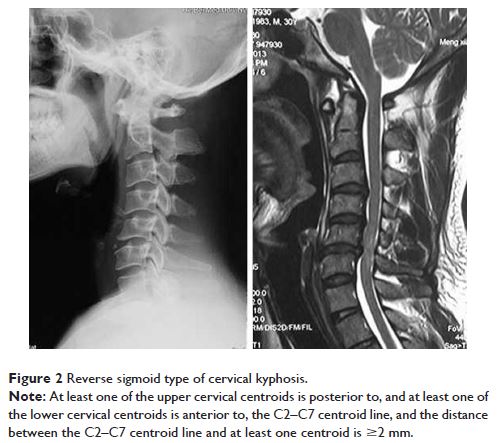9 0 8 0 2
论文已发表
注册即可获取德孚的最新动态
IF 收录期刊
- 2.6 Breast Cancer (Dove Med Press)
- 3.9 Clin Epidemiol
- 3.3 Cancer Manag Res
- 3.9 Infect Drug Resist
- 3.6 Clin Interv Aging
- 4.8 Drug Des Dev Ther
- 2.8 Int J Chronic Obstr
- 8.0 Int J Nanomed
- 2.3 Int J Women's Health
- 3.2 Neuropsych Dis Treat
- 4.0 OncoTargets Ther
- 2.2 Patient Prefer Adher
- 2.8 Ther Clin Risk Manag
- 2.7 J Pain Res
- 3.3 Diabet Metab Synd Ob
- 4.3 Psychol Res Behav Ma
- 3.4 Nat Sci Sleep
- 1.9 Pharmgenomics Pers Med
- 3.5 Risk Manag Healthc Policy
- 4.5 J Inflamm Res
- 2.3 Int J Gen Med
- 4.1 J Hepatocell Carcinoma
- 3.2 J Asthma Allergy
- 2.3 Clin Cosmet Investig Dermatol
- 3.3 J Multidiscip Healthc

颈椎后凸畸形患者在接受颈椎手术治疗脊髓损伤后临床疗效差的发生率和危险因素
Authors Zhang Y, Li J, Li Y, Shen Y
Received 26 August 2017
Accepted for publication 14 November 2017
Published 8 December 2017 Volume 2017:13 Pages 1563—1568
DOI https://doi.org/10.2147/TCRM.S150096
Checked for plagiarism Yes
Review by Single-blind
Peer reviewers approved by Dr Hoa Le
Peer reviewer comments 2
Editor who approved publication: Professor Deyun Wang
Objective: This
retrospective study investigated the incidence and risk factors of poor
clinical outcomes after cervical surgery for cervical spinal cord injury in a
large population of patients with global or segmental cervical kyphosis.
Methods: The clinical and radiological evaluation results of 269 patients with
cervical kyphosis who underwent either anterior or posterior surgery between
2008 and 2013 were collected, preoperatively and at each follow-up after
surgery.
Results: All patients were followed for an average of 2.5 years. Outcomes
were classified as good or poor (n=156 and 113 patients, respectively), based
on the Japanese Orthopedic Association (JOA) recovery ratios. The rates of
patients with good or poor outcomes were statistically comparable with regard
to gender ratio, type of injury, history of diabetes or cardiovascular disease,
interval between injury and surgery, and follow-up time. The multivariate
logistic regression analysis indicated that the following were independent
predictors of poor improvement: patient age (P =0.016, odds ratio
[OR] =1.0261); preoperative JOA scores (P =0.003,
OR =0.1932); and cervical instability (P =0.004, OR
=2.1562).
Conclusion: This study showed that advanced age, low preoperative JOA score, and
cervical instability are closely associated with a poor surgical outcome in
patients with cervical kyphosis. However, these results do not suggest that the
type of cervical kyphosis influences the clinical outcome of surgery.
Keywords: cervical kyphosis, segmental kyphosis, global kyphosis, spinal cord injury,
spinal cord surgery, poor outcome
